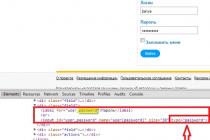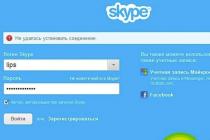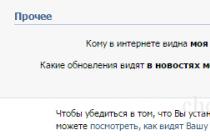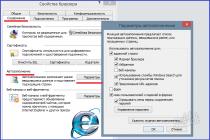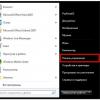When it comes to computer networks, you can often hear the mention of NFS. What does this acronym mean?
It is a distributed file system protocol originally developed by Sun Microsystems in 1984 that allows a user on a client computer to access files over a network similar to accessing local storage. NFS, like many other protocols, is based on the Open Network Computing Remote Procedure Call (ONC RPC) system.
In other words, what is NFS? It is an open standard, defined in the Request for Comments (RFC), that allows anyone to implement the protocol.
Versions and variations
The inventor used only the first version for his own experimental purposes. When the development team added significant changes to the original NFS and released it outside of Sun's credit, they designated new version as v2 so that you can test interoperability between distributions and create a fallback.

NFS v2
Version 2 originally worked only over the User Datagram Protocol (UDP). Its developers wanted to keep the server side without blocking outside the main protocol.
The virtual file system interface allows for modular implementation reflected in a simple protocol. By February 1986, solutions were demonstrated for operating systems such as System V release 2, DOS, and VAX / VMS using Eunice. NFS v2 only allowed the first 2 GB of a file to be read due to 32-bit limitations.

NFS v3
The first proposal to develop NFS version 3 at Sun Microsystems was announced shortly after the release of the second distribution. The main motivation was to try to mitigate the problem of synchronous write performance. By July 1992, practical improvements had resolved many of the shortcomings of NFS version 2, while leaving only inadequate file support (64-bit file sizes and offsets).
- Support for 64-bit file sizes and offsets for processing data larger than 2 gigabytes (GB);
- support for asynchronous recording on the server to improve performance;
- additional file attributes in many responses to avoid having to retrieve them again;
- a READDIRPLUS operation to get data and attributes along with filenames when scanning a directory;
- many other improvements.
During the introduction of version 3, support for TCP as a transport layer protocol began to increase. The use of TCP as a means of transferring data, performed using NFS over the WAN, began to allow large file sizes to be transferred for viewing and writing. This allowed developers to overcome the 8K limit imposed by the User Datagram Protocol (UDP).
What is NFS v4?
Version 4, influenced by the Andrew File System (AFS) and Server Message Block (SMB, also called CIFS), includes performance improvements, better security, and a conditional protocol.

Version 4 was the first distribution developed by the Internet Engineering Task Force (IETF) after Sun Microsystems outsourced protocol development.
NFS version 4.1 aims to provide protocol support for leveraging clustered server deployments, including the ability to provide scalable concurrent file access across multiple servers (pNFS extension).
The newest file system protocol, NFS 4.2 (RFC 7862), was officially released in November 2016.
Other extensions
With the development of the standard, appropriate tools have appeared for working with it. For example, WebNFS, an extension for versions 2 and 3, allows the Network File System Access Protocol to more easily integrate into web browsers and enable work through firewalls.

Various third-party protocols have become associated with NFS as well. The most famous of them are:
- Network Lock Manager (NLM) with byte protocol support (added to support UNIX System V file locking API);
- remote quota (RQUOTAD), which allows NFS users to view storage quotas on NFS servers;
- NFS over RDMA - an adaptation of NFS that uses remote direct memory access (RDMA) as the transmission medium;
- NFS-Ganesha is a user-space NFS server that supports CephFS FSAL (Filesystem Abstraction Layer) using libcephfs.
Platforms
Network File System is often used with Unix operating systems (such as Solaris, AIX, HP-UX), Apple's macOS, and Unix-like operating systems (such as Linux and FreeBSD).
It is also available for platforms such as Acorn RISC OS, OpenVMS, MS-DOS, Microsoft Windows, Novell NetWare, and IBM AS / 400.

Alternative protocols remote access to files include Server Message Block (SMB, also called CIFS), Apple Transfer Protocol (AFP), NetWare Core Protocol (NCP), and OS / 400 Server File System (QFileSvr.400).
This is due to the requirements of NFS, which are oriented mostly towards Unix-like "shells".
At the same time, SMB and NetWare (NCP) protocols are used more often than NFS in systems running Microsoft Windows... AFP is most common on Apple Macintosh platforms, and QFileSvr.400 is most common on OS / 400.
Typical implementation
Assuming a typical Unix-style scenario where one computer (client) needs access to data stored on another (NFS server):
- The server implements Network File System processes, started by default as nfsd, to make its data publicly available to clients. The server administrator determines how to export directory names and options, usually using the / etc / exports configuration file and the exportfs command.
- Administering server security ensures that it can recognize and approve a verified client. Its network configuration ensures that appropriate clients can negotiate with it through any firewall system.
- The client machine requests access to the exported data, usually by issuing the appropriate command. It queries the server (rpcbind) that is using the NFS port and subsequently connects to it.
- If all goes well, users on the client machine will be able to view and interact with the installed file systems on the server within the allowed options.
It should be noted that the automation of the Network File System process can also take place - perhaps using etc / fstab and / or other similar means.
Development to date
By the 21st century, rival protocols DFS and AFS have not achieved any major commercial success over the Network File System. IBM, which previously acquired all commercial rights to the above technologies, donated most of the AFS source code to the free developer community. software in 2000. The Open AFS project still exists today. In early 2005, IBM announced the completion of AFS and DFS sales.
In turn, in January 2010, Panasas introduced NFS v 4.1, a technology that improves concurrent data access capabilities. Network File System v 4.1 protocol defines a method for separating file system metadata from the location of specific files. So it goes beyond simple name / data separation.
What is NFS of this version in practice? The above feature distinguishes it from the traditional protocol, which contains the names of files and their data under the same binding to the server. With Network File System v 4.1, some files can be distributed across multisite servers, but client participation in separating metadata and data is limited.
In the implementation of the fourth distribution kit of the NFS protocol, the server is a set of server resources or components; they are assumed to be controlled by the metadata server.
The client still contacts the same MDS server to crawl or interact with the namespace. When it moves files to and from the server, it can directly interact with the dataset belonging to the NFS group.
Already at the start screen in Need for Speed Undergroung 2, you can get acquainted with the main goal of the game. It is a beautiful and powerful car, designed in accordance with the excellent style of the player, with modified body elements and unsurpassed speed characteristics. In the game, you can completely recreate copies of a Ford Mustang, Nikki Maurice's car with original NFSU vinyl, or the Nissan Z, which was Rachel Taylor's main car and had the rarest set of tuning parts - a wide body kit.There is a lot of controversy around this topic, because no one knows an unambiguous way to get access to such upgrades. It has been fully established that wide body kits become available regardless of game progress, but they can be opened no earlier than at the fifth stage of a career.
Reputation points for cars and sponsors
Parts for car upgrades are often bonuses for winning competitions, usually sponsored and special. In addition, for winning any of the races, not only a monetary reward is provided, but also the accrual of reputation points, a large number of which increases the player's chances of discovering unique parts.It should be recalled that each sponsor proposes to hold several special races in the final of the competition and receive unique prizes as a result. There are several known cases when opening a body extension in Need for Speed I succeeded precisely after winning sponsorship races or immediately after.
Random pick and hidden race prizes
Players who intend to open all possible improvements for the car, including wide body kits, should not rush through the game only on the tasks of the main storyline. Each of the career stages is accompanied by additional opportunities that are not entirely obvious to the gamer.One of the "Easter eggs" of Underground 2 - special racers, which can meet the protagonist as rivals in the main competition. In this case, winning the race is almost always accompanied by a discovery additional opportunities in a workshop.
On the map of the game world there are many races available for passing, but the sponsor does not oblige to participate in all in order to fulfill the terms of the contract. The more victories a player wins, the more likely it is to receive additional prizes. There are also hidden races in the game. They cannot be found on the map in free ride mode, but you can see the halos when you drive by. Although, looking at the map and being at the same time in the garage, the player can establish the approximate location of the competition venues. It should be noted that the likelihood of receiving an additional prize for participating in races is completely random.
Participation in the "outrans"
The most effective method for obtaining unique upgrades, including opening body extension kits, is to participate in free races, the so-called Out Run. You can start them by getting close to an opponent in the city driving mode (other riders are indicated on the map with red triangles).To get the body expansion for the Outrans, the player needs to win several victories in a row, and the more unique and valuable the discovery, the greater this number. For example, the first widebody kit takes four wins, and to get the NFSU branding on your car, you need to defeat rivals eleven times in a row. In addition to body extensions, other upgrades can be obtained as a reward, and the win counter is reset after a failure or a prize.
Hello everyone, friends. So, now we would like to tell you about how to open all tuning in NFS Most Wanted 2005
... This article is perfect for those who do not want to gradually go through the game, and who want a completely open tuning already at the beginning of the game. Here are a few ways for you to discover all the tuning in the legendary game Need For Speed Most Wanted 2005. So let's start right away with the first method.
Open all tuning via cheat codes
As you already understood, the first way is. There are several cheat codes for opening visual and technical tuning, which you will find below. All cheat codes must be entered on English language before entering the main menu, when the message “Click to continue” is displayed on the screen.gimmevisual1- the external tuning of the first level opens.
gimmevisual2- the external tuning of the second level opens.
needperformance1- first level performance tuning opens.
needperformance2- second level performance tuning opens.
needmybestbuy- the cheat code will unlock unique vinyls for you.
Open all tuning through the trainer "Teleporter"
A very convenient and easy way to open all tuning in NFS Most Wanted 2005 is to use. You can download this trainer from our website. The advantage of the trainer is that you can open all tuning at the very beginning of the game on your own profile. Download the trainer and run it, then follow the instructions.
- Run the trainer itself from the archive.
- Press the button "Run The game”, After which our NFS Most Wanted will start.
- Next, we minimize the game through ALT + TAB and put a tick on the function Enable all carparts.
Open all tuning through the trainer "CarTuner 1.3"

Very cool trainer "CarTuner 1.3" for NFS Most Wanted 2005, with which you can improve the technical part of your car. That is, in fact, only performance tuning will be open to you. You can download from our website, as well as find instructions for adding tuning.
Open all tuning via save
A very simple and uncomplicated way, namely to download the already completed one with fully open tuning. The method is suitable for those who do not want to download various programs or take other actions. The method is very good and really effective. By the way, we have already written on our website, so this shouldn't be a problem. Have a nice game!If you have more than one computer at home (or at work), then a natural desire will be to combine them into a network to use shared resources on computers. Ubuntu allows you to do this in different ways - SMB (Server Message Block) using Samba (I'll write about this next time) and using NFS (network file system). If your network computers run different operating systems (Linux, Windows), then it is more expedient to use Samba. But if all computers run Ubuntu, then it makes sense to install NFS
The benefits of NFS are more even load on the network, less CPU utilization, and displaying shared resources like regular folders on the system.
Installing NFS on Ubuntu consists of two steps: Installing an NFS client and an NFS server. You need a client to access folders on another computer. To provide access to folders on your computer, you need a server. So let's move on to setting up.
Of course, there is a lot of information on nfs on the net, but you have to browse through many sites in search of "pitfalls", so I decided to collect my experience in this article.
Install the necessary packages for the client (nfs-common) and the server (nfs-kernel-server). In the terminal, execute the following command:
sudo apt-get install nfs-kernel-server nfs-common portmap
Setting up an NFS server.
For example, we will provide general access to the / common, / common1 and / common2 folders located in the / user home folder of the user user under whose name we logged on to the computer with the address 192.168.0.1.
Terms of use of folders (for example):
- / common- write / read access for all computers in the local network (from any subnet);
- / common1- read access to the computer with the address 192.168.0.100, the rest are denied access;
- / common2- read / write access to all computers from the 192.168.0.1 - 192.168.0.255 address range, except for the computer with the address 192.168.0.200.
All folder sharing information is stored in the / etc / exports file. We execute the command in the terminal:
sudo gedit / etc / exports
In the editor that appears, write:
/ home / user / common * (rw, async)
/ home / user / common1 192.168.0.100 (ro, async)
/ home / user / common2 192.168.0.1/24(rw,sync) 192.168.0.200 (noaccess)
We save the file.
Note that:
- the full path to the folder for sharing from the very root;
- there are no spaces between the computer address and mount options!
Note on spaces:
/ home / user / common1 192.168.0.100 (rw, async)
In this case, the computer with the address 192.168.0.100 with read / write permissions will gain access to the / home / user / common1 folder, the rest will not get access.
/ home / user / common1 192.168.0.100 (rw, async)
In this case, access to the / home / user / common1 folder will be given to a computer with the address 192.168.0.100 with read permissions, other computers will have read / write access!
Available options:
ro (rw)- Allows only read (read / write) requests.
subtree_check (no_subtree_check)- If a subdirectory of the file system is exported, but not the entire file system, the server checks if the requested file is in the exported subdirectory. Disabling verification decreases security, but increases data transfer speed.
sync (async)- indicates that the server should only respond to requests after the changes made by those requests are written to disk. The async option tells the server not to wait for information to be written to disk, which improves performance, but decreases reliability, because loss of information is possible in the event of a disconnected connection or equipment failure.
wdelay (no_wdelay)- Tells the server to delay execution of write requests if a subsequent write request is pending, writing data in larger blocks. This improves performance when sending large write queues. no_wdelay indicates not to postpone the execution of the command for writing, which can be useful if the server receives a large number of commands that are not related to each other.
noaccess- denies access to the specified directory. It can be useful if you have previously set access for all network users to a certain directory, and now you want to restrict access in the subdirectory to only some users.
Restart nfs-kernel-server:
sudo /etc/init.d/nfs-kernel-server restart
mount 192.168.0.1:/data z:
where 192.168.0.1 is the address of the NFS server
/ data - a shared resource on the server
z: - unallocated drive letter in Windows, to which the resource will be mounted
This is in the simplest and fastest case, when NFS without authorization and mounting occurs with the default parameters. For fine tuning, you can read:
mount /?
and the corresponding Windows Help topic
What is an NFS file?
NFS filename suffix is mainly used for Network Format System Temporary Format files. NFS file format compatible with software that can be installed on system platform Linux. The NFS file format, along with other file formats #NUMEXTENSIONS #, belongs to the Misc Files category. For NFS file management it is recommended Network file system.
Programs which support NFS file extension
Below is a table with a list of programs that support NFS files. Files with NFS extension, just like any other file formats, can be found on any operating system. Specified files can be transferred to other devices, whether mobile or stationary, but not all systems may be capable of properly handling such files.
Programs that support the NFS file
How to open an NFS file?
NFS access problems can be caused by various reasons. Fortunately, the most common problems with NFS files can be solved without deep knowledge of IT, and most importantly, in a matter of minutes. Below is a list of guidelines to help you identify and resolve file-related problems.
Step 1. Install Network File System software
 Problems with opening and working with NFS files are most probably having to do with no proper software compatible with NFS files being present on your machine. The solution to this problem is very simple. Download Network File System and install it on your device. Full list programs grouped by operating system can be found above. One of the most safe ways downloading the software is to use the links of the official distributors. Visit the Network File System website and download the installer.
Problems with opening and working with NFS files are most probably having to do with no proper software compatible with NFS files being present on your machine. The solution to this problem is very simple. Download Network File System and install it on your device. Full list programs grouped by operating system can be found above. One of the most safe ways downloading the software is to use the links of the official distributors. Visit the Network File System website and download the installer.
Step 2. Update Network File System to the latest version
 You still cannot access NFS files though Network file system installed on your system? Make sure the software is up to date. It may also happen that software creators, by updating their applications, add compatibility with other, newer file formats. This may be one of the reasons why NFS files are not compatible with the Network File System. All file formats that handled just fine previous versions this program must also be opened using the Network File System.
You still cannot access NFS files though Network file system installed on your system? Make sure the software is up to date. It may also happen that software creators, by updating their applications, add compatibility with other, newer file formats. This may be one of the reasons why NFS files are not compatible with the Network File System. All file formats that handled just fine previous versions this program must also be opened using the Network File System.
Step 3. Associate Network Format System Temporary Format files with Network File System
If you have installed latest version Network File System and the problem persists, select it as the default program to be used to manage NFS on your device. The method is fairly simple and varies little across operating systems.

Windows
- Right clicking on NFS will open a menu from which you have to select the option To open with
- Please select Choose another app→ More apps
- To end the process, select Find another app on this ... and using Explorer select the Network File System folder. Confirm, Always use this app to open NFS files and clicking OK.

Change default app to Mac OS
- By clicking right mouse button on the selected NFS file open the file menu and choose Information
- Find the option To open with- click the title if it is hidden
- Select the appropriate program from the list and confirm by pressing “ Change for everyone " .
- A window should appear with a message that this change will be applied to all files with NFS extension... By clicking Forward, you confirm your choice.
Step 4. Make sure NFS is not faulty
If you followed the instructions in the previous steps and the issue is still not resolved, then you should check the NFS file in question. Problems with opening a file can arise for various reasons.

1. The NFS may be infected with malware - make sure to scan it with an antivirus tool.
If the NFS is indeed infected, it is possible that the malware is blocking it from opening. It is recommended that you scan your system for viruses and malware as soon as possible, or use an online antivirus scanner. If the scanner detects that the NFS file is insecure, proceed as directed antivirus software to neutralize the threat.
2. Make sure the structure of the NFS file is intact
If you receive a problematic NFS file from a third party, ask them to provide you with another copy. It is possible that the file was not properly copied to the data store and is incomplete and therefore cannot be opened. This can happen if the download process file with nfs extension was interrupted and the file data is corrupted. Download the file again from the same source.
3. Make sure you have the appropriate access rights
Sometimes a user needs administrator rights to access files. Sign out of your current account and sign in account with sufficient access rights. Then open the Network Format System Temporary Format file.
4. Make sure your device meets the requirements to be able to open the Network File System
If the systems has insufficient resources to open NFS files, try closing all currently running applications and try again.
5. Make sure that your operating system and drivers are updated
Regularly updated system, drivers and programs keep your computer safe. It can also prevent problems with Network Format System Temporary Format files... It is possible that one of the available system or driver updates may solve the problems with NFS files affecting older versions of given software.





